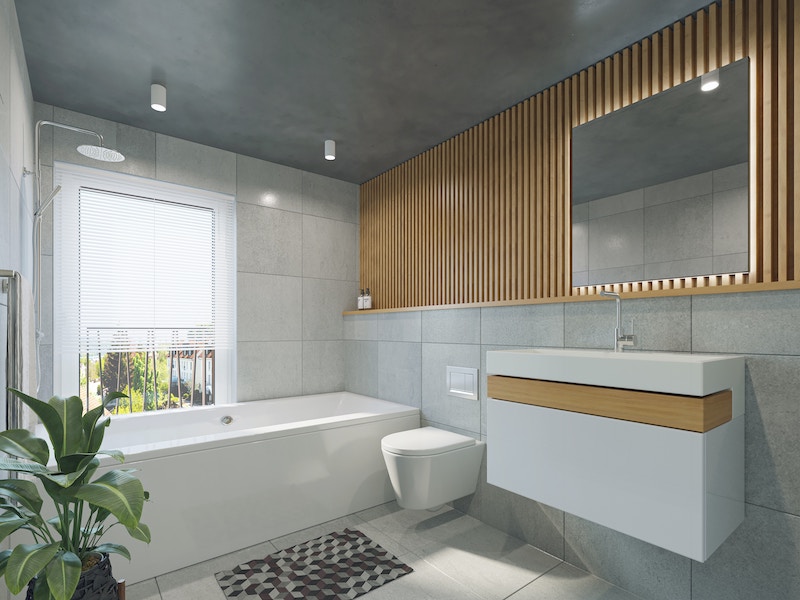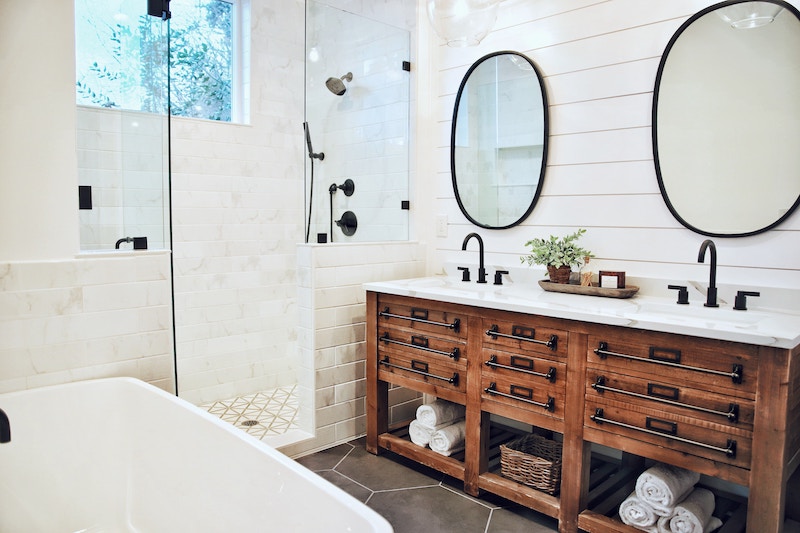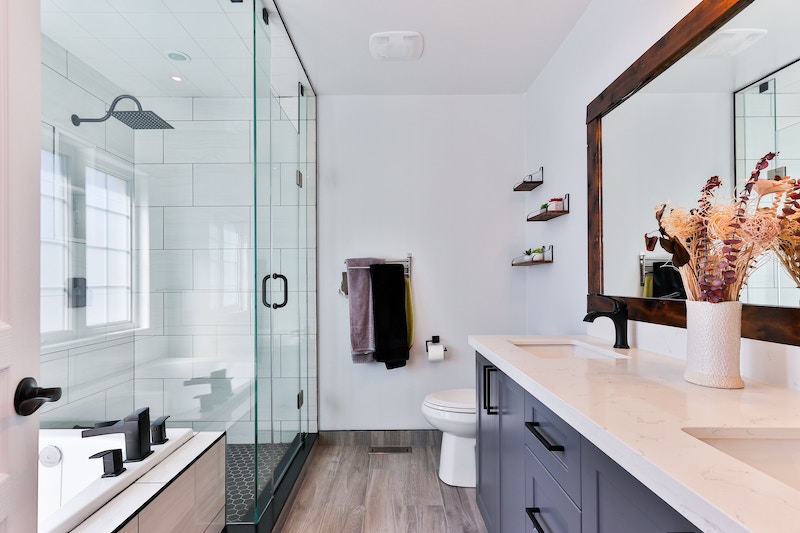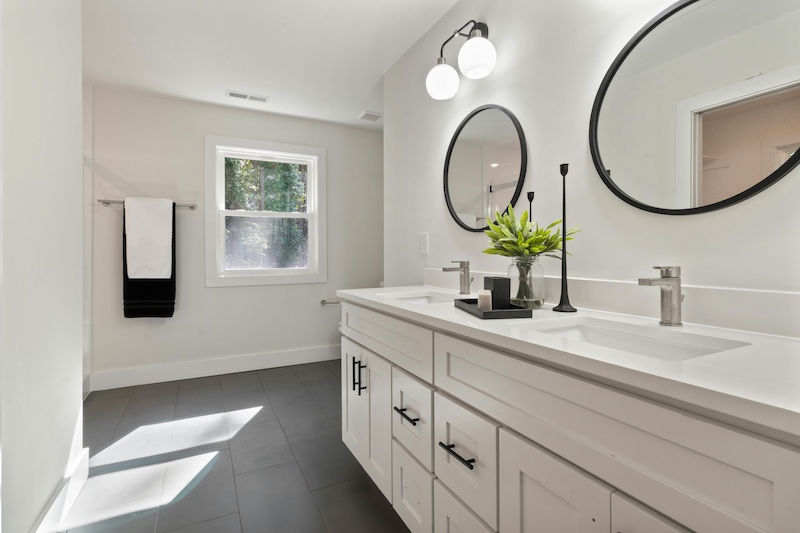How to Replace a Bathroom Vanity Like a Pro: Upgrade Your Bathroom Today
by Gary Wade • October 26, 2023
When it comes to home improvement projects, discovering how to replace a bathroom vanity can have a significant impact on the overall look and functionality of your bathroom. Whether you're looking to update the style or simply need more storage space, replacing a bathroom vanity is a task that can be tackled by any DIY enthusiast. In this comprehensive guide, we will take you through the step-by-step process of replacing a bathroom vanity, making it easy for you to achieve professional-looking results without the need for hiring a contractor.
Tools and materials needed for replacing a bathroom vanity
Before you dive into the project, it's essential to gather all the necessary tools and materials. Here's a list of items you'll need:
- Adjustable wrench
- Screwdrivers (both flathead and Phillips)
- Pliers
- Measuring tape
- Level
- Drill
- Hole saw (if installing a new faucet)
- Caulk gun
- Silicone caulk
- Safety goggles and gloves
- New bathroom vanity and sink
- Faucet
- Drain assembly
- Water supply lines
Having all these tools and materials ready before you start will save you time and ensure a smooth installation process.

Preparing the bathroom for the vanity replacement
Before you begin removing the old bathroom vanity, it's important to prepare the bathroom for the upcoming renovation. Start by turning off the water supply to the sink. You can usually find the shut-off valves under the sink or in a nearby utility area. Once the water is turned off, open the faucet to release any remaining water pressure.
Next, remove any items from the vanity and clear the surrounding area. It's also a good idea to protect the floor by laying down drop cloths or old towels to catch any debris or water that may be spilled during the installation process.
Removing the old bathroom vanity
Now that you've prepared the bathroom, it's time to remove the old bathroom vanity. Start by disconnecting the plumbing fixtures. Use an adjustable wrench to loosen the nuts connecting the water supply lines to the faucet. Place a bucket or towel under the connections to catch any water that may still be in the lines.
Once the plumbing fixtures are disconnected, score the caulking (if present) where the cabinet meets the wall and around the edges of the countertop and/ or backsplash with a razor knife so the caulking won't damage your paint or drywall as the cabinet and top are removed.
If it's manageable, you can proceed to remove the screws securing the cabinet to the wall and remove the vanity with the top together. If it's a large vanity or a solid surface countertop, you may need to remove the top prior to removal. If they are solid surface you will need to pry the countertops loose in order to remove them.
If it's an older type of countertop (laminate or butcher block) look for the screws that are holding it in place inside the vanity and remove them. You are then ready to carefully remove and discard your old vanity.
With the vanity removed, inspect the wall for any damage or repairs that may be needed before installing the new vanity. Patch any holes or cracks and allow sufficient time for the repairs to dry before moving on to the next step.

Installing the new bathroom vanity
Now that you've successfully removed the old bathroom vanity, it's time to install the new one. Begin by placing the new vanity in the desired location, ensuring that it is level and centered in the space. Use a level to double-check the alignment.
Next, mark the locations of the plumbing fixtures on the back of the vanity. This will help you make accurate cuts or holes for the pipes and drain assembly. Use a hole saw or drill to create the necessary openings.
Once the plumbing fixtures are accounted for, secure the vanity to the wall using screws or nails. Make sure it is firmly attached to prevent any wobbling or shifting.
Connecting the plumbing fixtures
With the new vanity securely in place, it's time to connect the plumbing fixtures. Start by attaching the faucet to the sink according to the manufacturer's instructions. Use a wrench to tighten the connections, being careful not to overtighten.
Next, install the drain assembly. Apply a thin bead of silicone caulk to the underside of the drain flange to create a watertight seal. Insert the assembly into the sink drain hole and tighten the nut from underneath the sink.
Lastly, connect the water supply lines to the faucet. Use an adjustable wrench to tighten the nuts, making sure they are snug but not overly tightened.

Securing the vanity to the wall
To ensure the new bathroom vanity is secure and stable, it's important to anchor it to the wall. Locate the studs behind the vanity and mark their positions on the back of the vanity. Then, drill pilot holes into the vanity and secure it to the wall using screws or nails.
It's crucial to use appropriate hardware and ensure a strong connection between the vanity and the wall to prevent any accidents or damage.
Adding finishing touches to the new bathroom vanity
With the installation complete, it's time to add the finishing touches to your new bathroom vanity. Apply a bead of silicone caulk along the edges of the vanity countertop to create a waterproof seal. Smooth the caulk with a caulk tool or your finger to achieve a clean, professional look.
Clean the vanity and sink thoroughly, removing any dust or debris from the installation process. Finally, turn on the water supply and test the faucet and drain for any leaks. Make any necessary adjustments or tightenings as needed.

Common mistakes to avoid when replacing a bathroom vanity
While replacing a bathroom vanity is a relatively straightforward project, there are some common mistakes to avoid to ensure a successful installation. Here are a few tips to keep in mind when you are learning how to replace a bathroom vanity:
- Measure twice, cut once: Accurate measurements are crucial for a proper fit. Double-check all measurements before making any cuts or holes.
- Use the right tools: Using the correct tools for the job will make the process much easier and help prevent damage to the vanity or surrounding surfaces.
- Don't overtighten: When connecting plumbing fixtures, be careful not to overtighten the nuts. This can lead to leaks or damage to the fixtures.
- Secure the vanity properly: Anchoring the vanity securely to the wall is essential for stability and safety. Make sure to locate the studs and use appropriate hardware.
Final tips for a successful DIY bathroom vanity replacement
Replacing a bathroom vanity may seem like a daunting task, but with the right tools and a little know-how, it can be a rewarding DIY project. By following the step-by-step guide outlined above, you can achieve professional-looking results and transform your bathroom into a functional and stylish space.
Remember to take accurate measurements, use the right tools, and secure the vanity properly to ensure a successful installation. And don't forget to double-check all connections and test for any leaks before considering the project complete.
With this ultimate DIY guide, replacing a bathroom vanity has never been easier. So, roll up your sleeves and get ready to enjoy the satisfaction of a job well done. Discover how to replace a bathroom vanity and create the bathroom of your dreams!
overall rating: my rating: log in to rate



